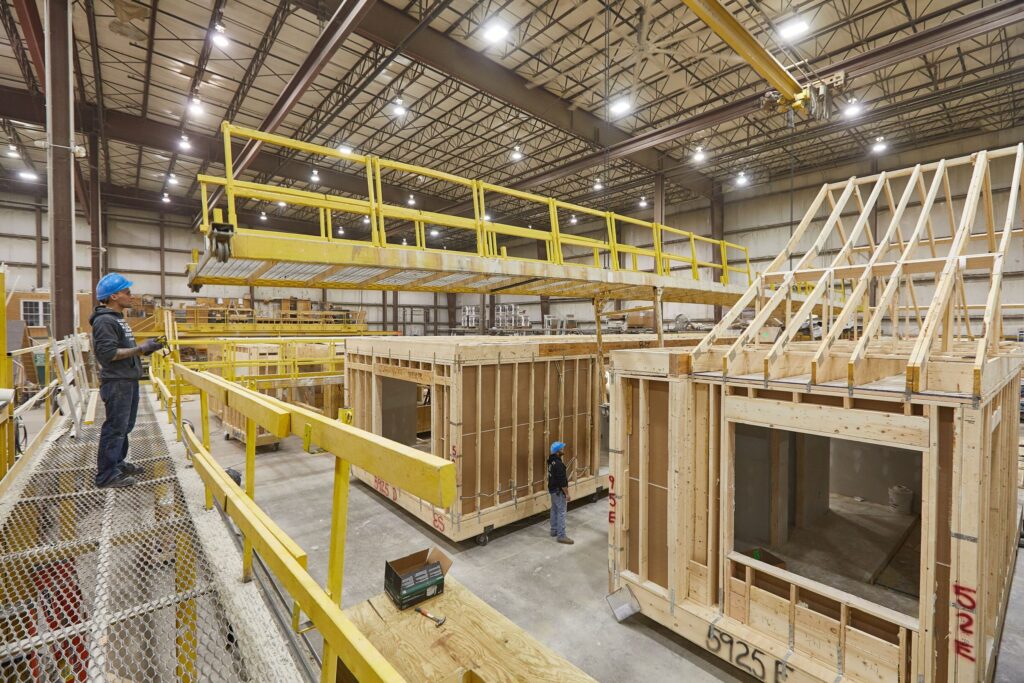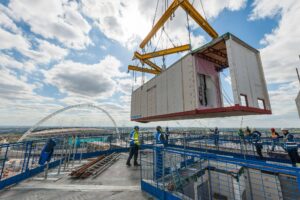In the grand tapestry of innovation, ideas that change the world often originate from the most unexpected moments. It can be as simple as one person waking up in the middle of the night after reading a couple of articles about the dire need for more factory-built homes. The thought crosses their mind: “I can do that. It couldn’t be that hard, could it?” With that, a seed has been planted, and the journey to transform the housing landscape for the homeless and disaster victims begins.

All photos: Signature Building Systems
However, before you start seeking investors and signing contracts, there is a maze of preliminary steps that must be navigated. Many aspiring visionaries in the construction industry stumble right at this initial stage. Let’s explore the critical early steps to embark on your quest to build better homes.
In-Depth Research and Market Analysis
Your journey begins with a deep dive into the housing industry. Immerse yourself in extensive research, dissecting current trends, market demands, and the competitive landscape. Your understanding of the market forms the bedrock upon which your project will stand.

As you broaden your understanding of the housing industry, don’t hesitate to probe even deeper. Examine the latest trends that are shaping the market. In recent years, a trend towards smaller homes and urban living has gained momentum. What other trends are currently shaping the housing market, and how do they intersect with your vision?
Understanding the demand for housing in your target market is paramount. What types of housing are in the highest demand? Are people seeking single-family homes, tiny homes, or disaster housing? Will your product effectively meet this need?
In your research, identify your competitors. Analyze their strengths and weaknesses. What innovative approaches are they employing to cater to the needs of homebuyers and sellers in your target market? A comprehensive understanding of the competitive landscape is indispensable.
Defining Your Vision and Concept
With a solid understanding of the market, it’s time to define your concept for better homes. What unique improvements or innovations does your idea introduce? Clarity is essential when conveying your vision to others.
Developing a Comprehensive Business Plan
A detailed business plan serves as your roadmap to bring your vision to life. This plan must encompass your vision, mission, goals, and strategies for executing your idea. Here’s a breakdown of what this entails:
Vision and Mission: Articulate your overall vision for your business and the problem you aim to solve. What value will you offer to your customers? Your vision and mission should inspire and align with your core purpose and values.
Setting Goals: Clearly define what you want to achieve with your business. Do you have a specific customer target? A revenue goal? Expansion plans? Your goals should be specific, measurable, achievable, relevant, and time-bound.
Market Research: Your market research should be thorough and up-to-date. Who is your target market? What are their needs and desires? What pain points do they experience? Stay attuned to industry trends.

Strategy Development: How will you accomplish your goals? Your strategies encompass marketing, sales, production, delivery, and customer service. They should be well-defined and feasible.
Financial Projections: Develop realistic financial projections based on your market research. Understand how much capital you need to launch your business, the expected revenue, and the estimated expenses.
Completion of these crucial initial steps will take your idea from a mere seed to the early stages of germination. Your vision to build better homes is now on solid ground, ready to take root and grow.
Continuing the Journey
In following these initial steps, you’ve set a sturdy foundation for your quest to revolutionize the way homes are built. As you progress, continue to refine your concept, collect feedback, and adapt to the ever-evolving needs of the market. Success in the housing industry requires persistence, creativity, and an unwavering commitment to delivering value to customers.
The next stages of your journey will involve unlocking the secrets to securing investors and signing contracts to bring your factory-built homes to life. Stay tuned for the next installment as we guide you through this transformative journey. Your vision has the potential to reshape the housing landscape for the better, and with dedication and strategic planning, you can turn it into a reality that makes a difference in the lives of the vulnerable.
.
CLICK HERE TO READ NOVEMBER’S ISSUE
.
Gary Fleisher, the Modcoach, author























